
Search Assignments
Table of Contents
Our Experts

Search Assignments

Customers Reviews
Love knows no language, no borders, no conditions--and yet for millions of LGBTQ+ people around the world, love remains a battlefield. In some countries, same-sex couples can wed, adopt children, and live freely without fear; in others, their very existence is criminalized, their rights stripped, and their identities erased. The last decade has experienced monumental changes in favor of LGBTQ+ rights from the legalization of same-sex marriage to diverse bans on conversion therapy. Yet many countries now see a backlash against LGBTQ+ rights in the form of hate crimes and politically motivated laws.
The global state of LGBTQ+ rights is, however, not one uniform entity. For every country that legalizes same-sex marriage, another one passes laws restricting gender expression. For every step forward, there is always the counter-movement. This article addresses the changing landscape of LGBTQ+ rights, celebrating advances, naming drawbacks, and contemplating what lies ahead in the ongoing struggle for equality.
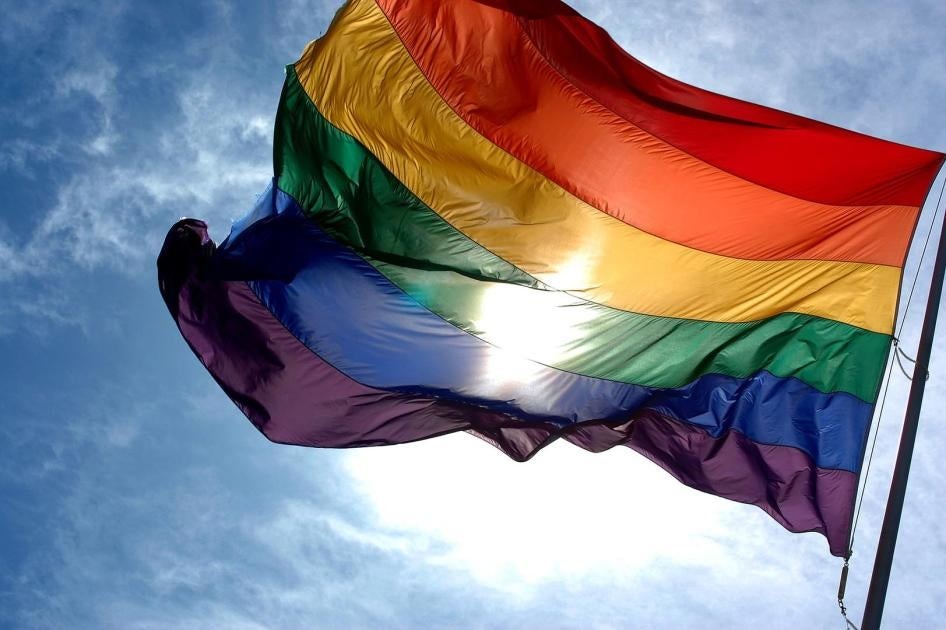
Despite significant progress in LGBTQ+ rights, many communities around the world still face serious discrimination and oppression. Alarmingly, nearly 2 billion people live in areas where consensual same-sex relationships are illegal, making love itself a crime. In 42 countries, same-sex relationships between women are also explicitly banned, reinforcing both legal and societal discrimination.
These harmful attitudes extend beyond laws and into real-life violence. A study in the U.S. found that LGBTQ+ hate crimes increased by 42% in 2021, driven by harmful rhetoric that portrays the community as a "threat" to traditional family values. In several regions, including Eastern Europe, Africa, and the Middle East, governments have intensified repression by enacting laws that limit gender expression, censor LGBTQ+ discussions, and encourage extremist groups to act with little fear of consequences.
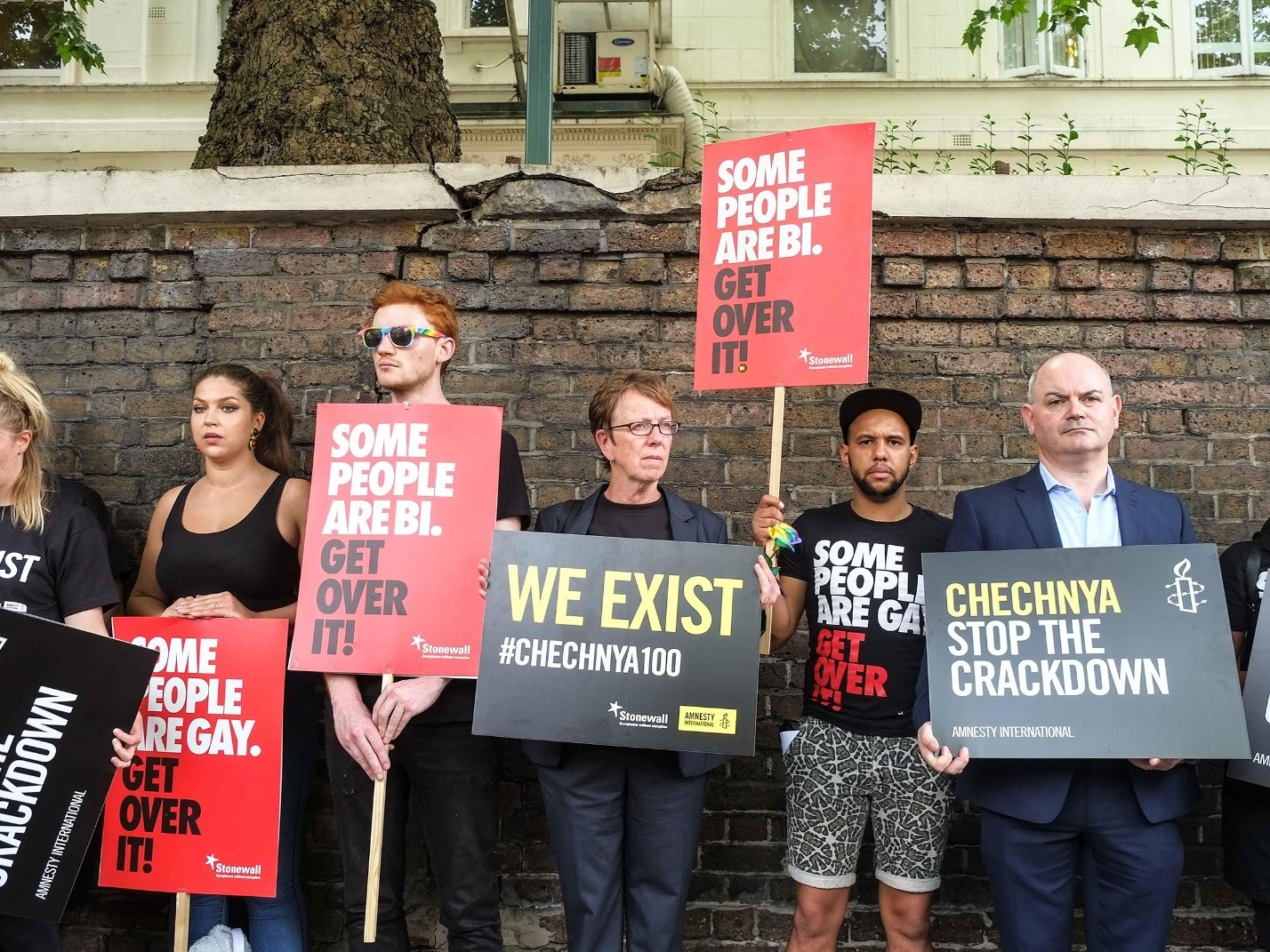
In this harsh reality, some groups face even greater persecution. Trans men and women, Black and Afro-descendant individuals, Indigenous LGBTQ+ women, and migrants and refugees experience overlapping forms of discrimination that increase their vulnerability.
Trans women are especially targeted by violence. Migrants and refugees seeking asylum based on their sexual orientation often find themselves in hostile environments with little protection.
In many countries, being LGBTQ+ is not only criminalized but can also lead to death. Countries such as Saudi Arabia, Iran, Yemen, Qatar, the UAE, Afghanistan, and Pakistan impose capital punishment for same-sex acts. In Iran, even a kiss between same-sex partners can result in 74 lashes, and repeat offenders may face execution. In Afghanistan, LGBTQ+ individuals live in fear under the Taliban, with reports of torture and honor killings.
Additionally, in Saudi Arabia, social media is used to trap LGBTQ+ individuals, leading to their arrest and severe punishment. These incidents are part of a broader pattern of violence and discrimination that affects LGBTQ+ communities worldwide.
While oppression and violence continue in many parts of the world, some nations have made remarkable strides toward equality. The LGBT+ Legal Equality Index (2024) [ourworldindata.org] provides a comprehensive measure of how closely LGBTQ+ rights align with those of straight and cisgender individuals. This index evaluates 15 key policies, including the legality of same-sex relationships, marriage equality, adoption rights, and the ability to change gender markers on official documents. Countries are scored on a scale from 0 to 100, with 0 representing total inequality and 100 reflecting full legal parity.
The data reveals a starkly divided world—where some regions embrace progress, others tighten restrictions, and many remain caught in between. A closer look at different regions illustrates this growing global contrast.
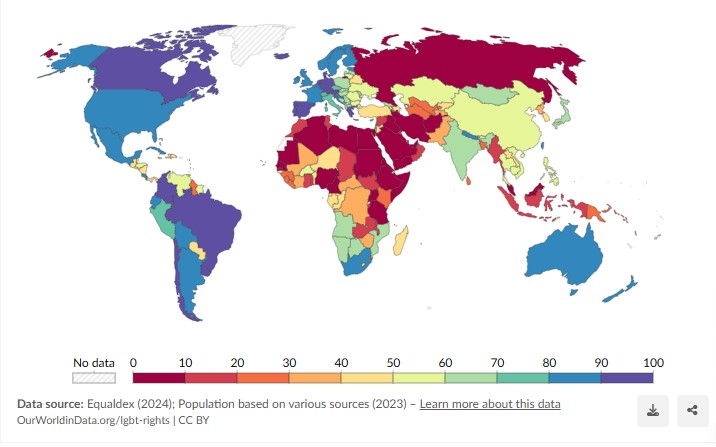
The Middle East is a tough place for LGBTQ+ rights, with many countries having strict rules and harsh punishments, like jail or even death. Israel is different because, while it doesn't officially allow same-sex marriage, it treats LGBTQ+ people better than most other Middle Eastern countries. Same-sex couples in Israel can adopt kids and marriages from other countries are recognized. Tel Aviv is a popular city for LGBTQ+ people and holds one of the biggest Pride parades in the area.
Asia is a place where some countries are making important changes, while others still have strict rules.
In 2019, Taiwan was the first country in Asia to allow same-sex marriage, which was a big step forward. Since then, Taiwan has also allowed same-sex couples to adopt children in 2023.
Singapore took a major step in 2022 by making same-sex relationships legal, which is seen as positive for LGBTQ+ people. However, at the same time, officials made sure that marriage still only means a man and a woman, so same-sex marriages are not recognized yet.
China has a complicated situation. Same-sex relationships are legal, but LGBTQ+ people still face a lot of discrimination, especially in jobs and education. Unlike some other countries, LGBTQ+ people in China don’t face violence from the government, but strict rules make it hard for them to speak out or be visible.
Since India made homosexuality legal in 2018, there have been positive changes for LGBTQ+ rights. More LGBTQ+ people are seen in movies, jobs, and conversations. But same-sex marriage is still not accepted, and discrimination continues.
Even though there are still challenges, the fight for LGBTQ+ rights is moving forward, showing signs of improvement and offering hope for a better future. Changes in laws and policies, along with more people recognizing these rights, are helping to create a world where everyone is accepted for who they love and who they are.
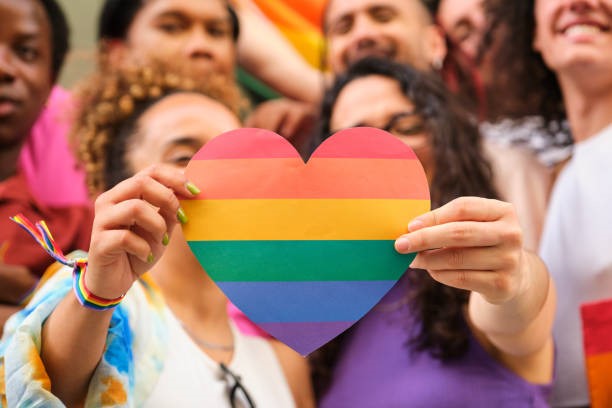
One big sign of progress is that more countries are allowing same-sex marriage, proving that love shouldn’t be restricted. Here are some recent highlights:
- Thailand (2024): This country became the first in Southeast Asia to legalize same-sex marriage, which is a big step forward in a region where LGBTQ+ rights are still not fully accepted.
- Estonia (2023): This was the first country that used to be part of the Soviet Union to recognize same-sex marriage, showing that attitudes are changing in Eastern Europe.
- Mexico (2022): Now, all 32 states in Mexico recognize same-sex marriage, which shows that Latin America is becoming more supportive of LGBTQ+ rights.
Many countries have made conversion therapy illegal. This is a harmful practice that tries to change a person's sexual orientation or gender identity.
- Canada (2022): Made conversion therapy illegal across the whole country because it is seen as a form of abuse.
- New Zealand (2022): Made all forms of conversion practices illegal, so LGBTQ+ people can't be forced into harmful treatments.
Laws have been put in place to protect LGBTQ+ individuals from discrimination:
- United States (2020s): The Supreme Court decided that firing someone for their sexual orientation or gender identity is illegal, which is a big step for job equality.
- Switzerland (2022): Made stronger laws to protect against discrimination, making homophobic hate speech a crime and allowing victims of hate crimes to get legal help.
The fight for gender recognition has made important progress, helping trans and non-binary people officially acknowledge their identities:
- Germany (2023): People can now change their gender on legal papers just by saying so, without needing medical proof.
- India (2019): A third gender was officially recognized, giving transgender people more rights and protection.
Having diverse people in media and politics has helped change how society views gender diversity:
- Argentina (2021):A new law says that at least 1% of public jobs must go to transgender people to help them get included in the workforce.
- LGBTQ+ Political Leaders: Countries like Iceland and Belgium have leaders who identify as LGBTQ+, showing that these voices can and should be part of government.
Although some progress has been made, there are still big problems for LGBTQ+ rights around the world. Lack of funding and disagreements between different groups make it hard for LGBTQ+ people and their supporters.
The Money Issue: Less Funding Available
One major problem for LGBTQ+ organizations is that they are getting less money. This makes it difficult for them to do important work. A report from 2021 showed that many governments are cutting back on funds for LGBTQ+ rights groups, which means they often have to depend on private donors and help from other countries.
At the same time, another report found that money for groups that fight against LGBTQ+ rights has gone up by 50% since 2012. This funding comes from a few rich people. Because of this, groups that want to promote equality often have a hard time getting enough money to keep their work going.
The Problem of Separation: Joining Forces for Strength
One big challenge for LGBTQ+ rights activists is that some people think their fight is separate from other causes, like women’s rights. Many women's rights groups see LGBTQ+ rights as a danger to their work because of misunderstandings. This separation makes it hard for them to work together to make important changes.
In truth, the fights for women’s rights, LGBTQ+ rights, racial equality, and gender fairness are all connected. They all face similar problems like sexism, racism, and other forms of discrimination that hurt marginalized groups. Working together against these issues is important for a fairer world.
Working together, feminist, LGBTQ+, and racial justice movements can form coalitions that allow them to challenge the structural inequalities they face. The combined strength of these movements will amplify their voices and increase their collective power to dismantle the systems of oppression that affect them.
Looking at LGBTQ+ rights around the world, we can see that while we've made progress, there's still a long way to go. There have been some wins and better protections, but money issues and misunderstandings between groups still hold us back. Fighting for LGBTQ+ rights isn't just about helping one group; it's about standing up against all kinds of unfairness. Problems like patriarchy, colonialism, racism, and white supremacy keep people apart. We can only fix these problems by working together. It’s important for each of us to help organizations, push for better laws, and support all movements. The big question is: Will we fight for everyone's rights, not just our own? The choices we make now will affect the world our children will live in.

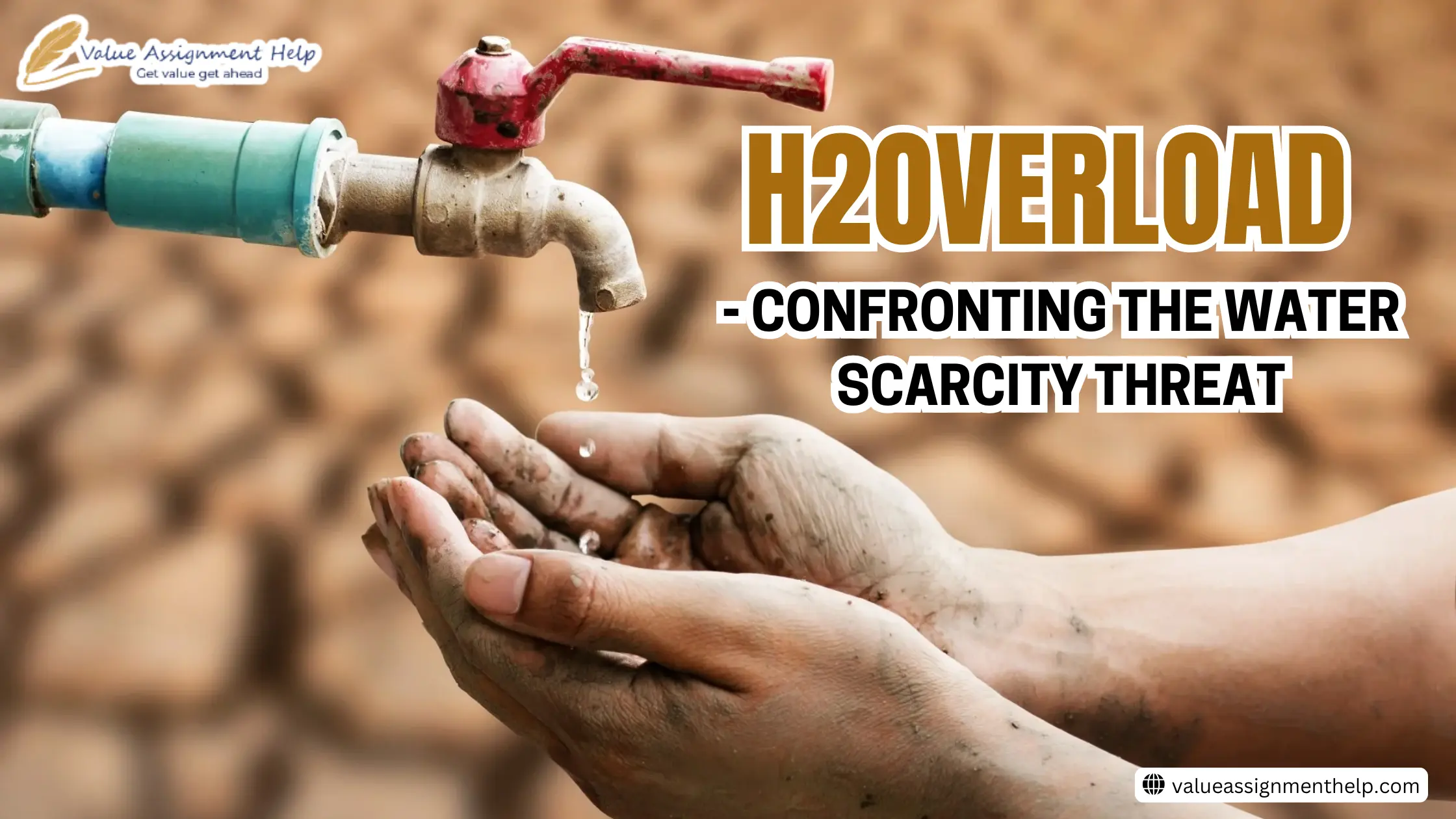
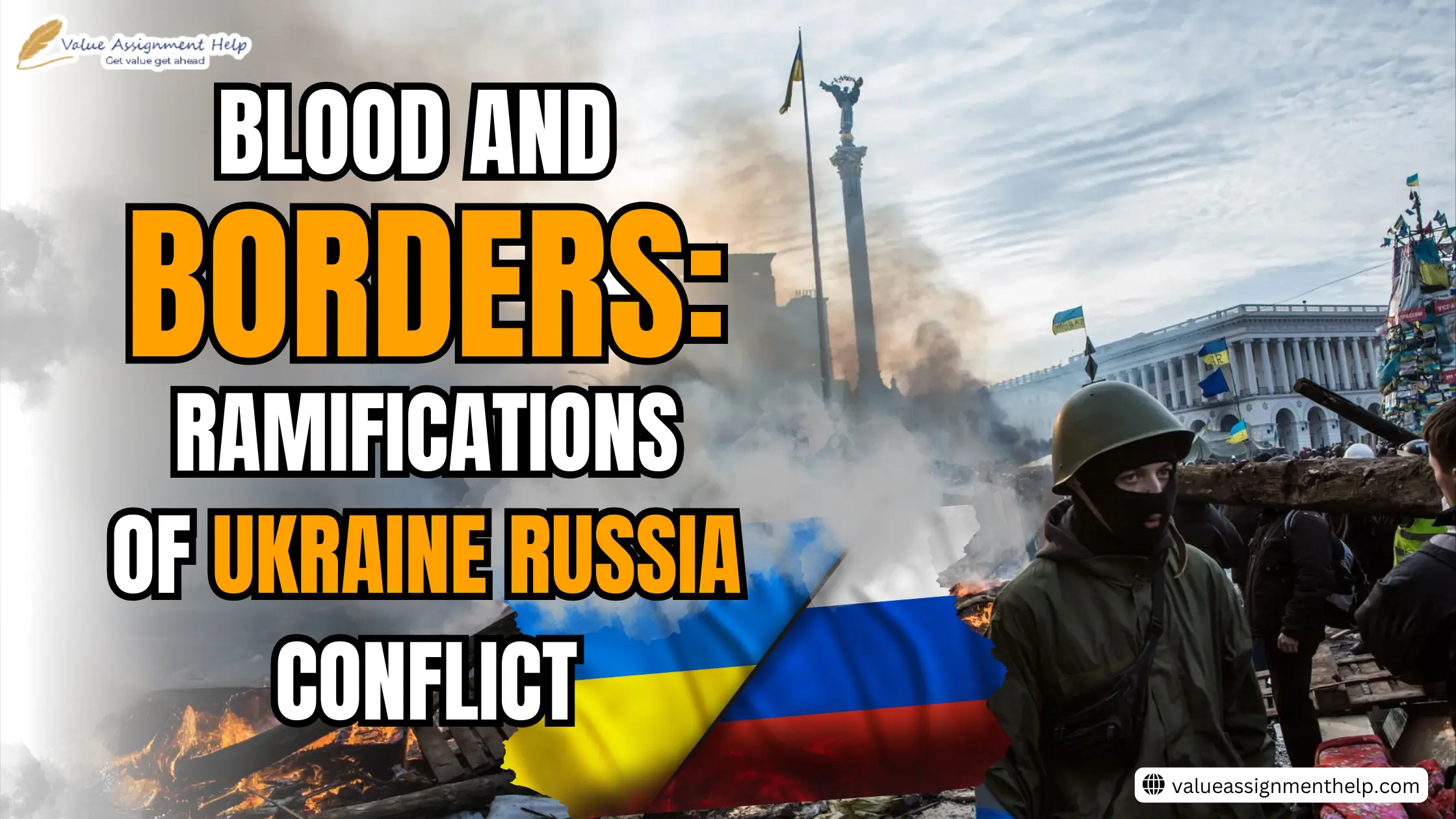

No Comments